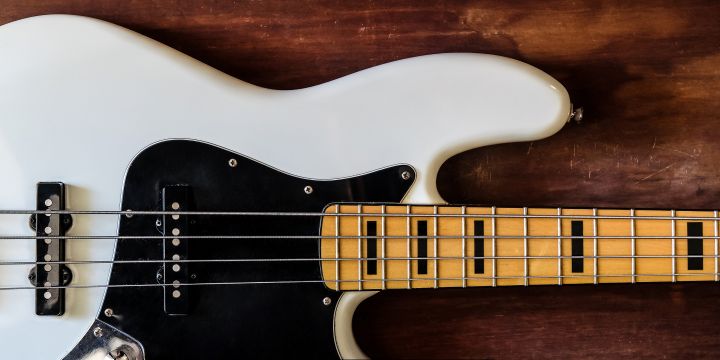In the world of stringed instruments, particularly guitars, dead spots can be a frustrating phenomenon for musicians. A dead spot is a specific area on the fretboard where notes sound muted or lack resonance, making it difficult for players to achieve the desired tonal quality. Identifying these troublesome areas is the first step in addressing the issue.
Musicians often notice dead spots when they play certain frets, typically around the 5th to 7th frets on the neck. The sound produced in these regions may feel lifeless, lacking the vibrancy and sustain that characterizes a well-functioning instrument. To pinpoint dead spots, players can perform a simple test by playing notes along the fretboard and listening for inconsistencies in volume and tone.
A common method involves playing a series of notes on adjacent frets and comparing their sound quality. If a particular note stands out as significantly quieter or duller than its neighbors, it may indicate a dead spot. Additionally, musicians can use a tuner to assess the pitch accuracy of each note, as dead spots may also affect tuning stability.
By carefully observing these discrepancies, players can effectively identify the locations of dead spots and take the necessary steps to remedy them.
Key Takeaways
- Dead spots on a guitar can be identified by playing each note on the fretboard and listening for any sudden loss of sustain or resonance.
- Causes of dead spots can include uneven frets, improper neck relief, and issues with the nut or bridge.
- Solutions for dead spots may involve adjusting the truss rod to correct neck relief, checking and potentially adjusting the nut and bridge, and evaluating the fretboard for any issues.
- Adjusting the truss rod can help to correct dead spots by ensuring the neck has the proper amount of relief.
- Checking the nut and bridge for proper string height and spacing can help to prevent dead spots from occurring.
Causes of Dead Spots
Understanding the underlying causes of dead spots is crucial for musicians seeking to resolve this issue. One primary factor contributing to dead spots is the construction and materials used in the instrument. The neck of a guitar, for instance, is typically made from wood, which can vary in density and grain structure.
These variations can lead to uneven vibrations along the neck, resulting in certain frets producing less resonance than others. Additionally, the placement of the truss rod, which is designed to adjust the neck’s curvature, can also influence how vibrations travel through the instrument. Another significant cause of dead spots is related to the setup of the guitar itself.
Factors such as string height, nut height, and bridge placement can all impact how sound waves propagate through the instrument. If the strings are too high or too low, it can create an imbalance that leads to muted notes in specific areas. Furthermore, environmental factors such as humidity and temperature can affect the wood’s properties over time, potentially exacerbating existing dead spots or creating new ones.
By recognizing these causes, musicians can better understand how to address and mitigate dead spots in their instruments.
Solutions for Dead Spots
Once musicians have identified the locations of dead spots and understood their causes, they can explore various solutions to remedy the issue. One effective approach is to adjust the truss rod, which plays a crucial role in maintaining the neck’s curvature. By making slight adjustments to the truss rod, players can alter the neck’s relief, allowing for improved string vibration and resonance across the fretboard.
It is essential to make these adjustments gradually and carefully, as over-tightening or loosening the truss rod can lead to further complications. In addition to truss rod adjustments, players may also consider changing their strings or experimenting with different gauges. Thicker strings can produce more tension and may help alleviate dead spots by enhancing overall resonance.
Moreover, using high-quality strings designed for optimal tone can make a noticeable difference in sound quality. Players should also ensure that their instrument is properly set up, with attention paid to nut height and bridge placement. A well-balanced setup can significantly reduce the occurrence of dead spots and improve overall playability.
Adjusting the Truss Rod
| Truss Rod Adjustment | Recommended Action |
|---|---|
| Neck Relief | Measure relief and adjust truss rod as needed |
| Tools | Use the appropriate hex key or wrench |
| Caution | Make small adjustments and check frequently |
| Professional Help | If unsure, seek assistance from a qualified technician |
Adjusting the truss rod is a fundamental step in addressing dead spots on a guitar. The truss rod is a metal rod that runs along the neck of the instrument and is designed to counteract the tension of the strings. Over time, changes in humidity and temperature can cause the neck to bow or warp, leading to uneven string action and potential dead spots.
By making careful adjustments to the truss rod, musicians can restore balance to their instrument and enhance its tonal quality. To adjust the truss rod effectively, players should first determine whether they need to increase or decrease neck relief. A simple method involves pressing down on the first and last frets of a string while measuring the gap at the 8th fret with a feeler gauge or even a business card.
If there is too much space between the string and fret, it may indicate that the neck has too much relief and needs tightening. Conversely, if there is little to no gap, loosening the truss rod may be necessary. Musicians should proceed with caution, making small adjustments—typically no more than a quarter turn at a time—and allowing time for the neck to settle before re-evaluating.
Checking the Nut and Bridge
In addition to adjusting the truss rod, checking both the nut and bridge is essential for addressing dead spots on a guitar. The nut serves as a critical point where strings rest before they travel down the fretboard, while the bridge anchors them at the other end. If either component is improperly set up or damaged, it can lead to issues with string height and intonation that contribute to dead spots.
When examining the nut, players should ensure that it is cut correctly for each string gauge being used. If slots are too deep or too shallow, it can affect how strings vibrate when played. Similarly, inspecting the bridge for proper alignment and height is crucial; an uneven bridge can lead to inconsistent string action across different frets.
By ensuring that both the nut and bridge are functioning optimally, musicians can create a more balanced setup that minimizes dead spots and enhances overall sound quality.
Evaluating the Fretboard
The condition of the fretboard itself plays a significant role in determining whether dead spots will occur on a guitar. Over time, wear and tear from playing can lead to grooves or uneven surfaces on frets that affect how strings vibrate when pressed down. Evaluating the fretboard for any signs of damage or wear is an important step in addressing dead spots.
Players should inspect each fret for flatness and smoothness; any irregularities may require leveling or crowning by a professional luthier. Additionally, cleaning the fretboard regularly can help maintain its condition and prevent buildup that could dampen vibrations. Using appropriate cleaning products designed for guitar maintenance will ensure that both wood and metal components remain in optimal shape.
By taking care of the fretboard, musicians can significantly reduce dead spots and improve their instrument’s overall performance.
Seeking Professional Help
While many musicians may feel comfortable making adjustments to their instruments on their own, there are times when seeking professional help becomes necessary. Luthiers possess specialized knowledge and experience that allows them to diagnose complex issues related to dead spots effectively. They can provide insights into potential causes that may not be immediately apparent to players and offer tailored solutions based on their expertise.
When consulting with a luthier about dead spots, musicians should come prepared with information about their instrument’s setup and any adjustments they have already attempted. This information will help guide discussions about potential solutions and ensure that both parties are on the same page regarding expectations. A professional setup may involve comprehensive adjustments beyond just addressing dead spots—such as fret leveling, nut replacement, or even complete refretting—ultimately leading to an improved playing experience.
Preventing Dead Spots
Preventing dead spots from developing in the first place is an ideal goal for any musician who values their instrument’s performance. Regular maintenance plays a crucial role in this prevention strategy; keeping an eye on environmental factors such as humidity levels can help protect wooden instruments from warping or cracking over time. Using a hygrometer to monitor humidity levels within a case or room can provide valuable insights into how best to care for an instrument.
Additionally, players should develop good habits when it comes to playing techniques and string care. Regularly changing strings not only enhances tone but also reduces wear on frets and other components that could contribute to dead spots over time. Furthermore, practicing proper playing techniques—such as avoiding excessive force when pressing down on strings—can help maintain fret integrity and prolong an instrument’s lifespan.
By taking proactive measures in both maintenance and playing habits, musicians can significantly reduce their chances of encountering dead spots in their beloved guitars.
If you’re a bass guitar player struggling with dead spots on your instrument, you may find this article on optimizing asset lifecycles with enterprise asset management to be an interesting read. Just like maintaining and optimizing assets is crucial for businesses, ensuring your bass guitar is in top condition can greatly improve your playing experience. Check out the article for some valuable insights on how to keep your instrument in peak performance.
FAQs
What is a dead spot on a bass guitar?
A dead spot on a bass guitar is a specific area on the fretboard where a note does not resonate or sustain properly, resulting in a dull or muted sound.
What causes dead spots on a bass guitar?
Dead spots can be caused by a variety of factors, including uneven frets, improper neck alignment, or a flaw in the construction of the instrument.
How can dead spots be fixed on a bass guitar?
Fixing dead spots on a bass guitar may require professional intervention, such as adjusting the truss rod, leveling and dressing the frets, or even replacing the neck or bridge.
Can dead spots be prevented on a bass guitar?
While some dead spots may be inherent to the design of the instrument, regular maintenance and proper setup can help minimize the occurrence of dead spots on a bass guitar.
Are dead spots common on bass guitars?
Dead spots can occur on any bass guitar, but the frequency and severity of dead spots can vary depending on the quality of the instrument and how well it is maintained.




